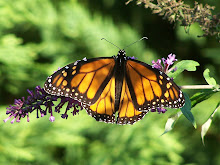
I am so glad I reread this book. The only real memories I had from the first time I experienced this story (over a decade ago) were of the pain and dismay over the loss of a friend at a young age. When I saw from the syllabus that we were expected to read it for class a sense of dread came over me. I thought "oh no, I don't want to read this story again, it's too sad". It was sad too. I bawled through the last few chapters just as I had the first time I read it. But I brought a lot more away with me at the end of the story this time. Maybe, it helped because this time the ending was not a surprise.
The most important thing about this novel is not the death of Leslie. It is the relationship between Jess and Leslie and the profound ways Jess is changed forever because of their friendship. I have spent 10 years teaching 4th and 5th graders and my oldest daughter is currently in the 4th grade. So it is with great certainty that I tell you that the time between the spring of the 4th grade year and the end of the 5th grade brings a huge change in a child's life. These changes are beautifully illustrated in this book.
By the time kids are in Middle school their peers hold more sway over thoughts, feelings and actions than parents and family. The struggle to find out who he is separate from his family is apparent in all of Jess's actions as well as his uncertainties. As the story begins we meet Jesse as he wakes early to run. He wants to be the fastest kid in the fifth grade and he is determined. We also discover early on that Jess likes to draw, would even like to be an artist one day. However, he gets no support from his parents and teachers with the exception of his music teacher, who he has a crush on. He wants to fit in, to be the best at something, to do something that will show the world who he is.
Then there is Leslie. She is the new kid in school. She doesn't fit in. She doesn't wear the "right" clothes. She doesn't play the "right" games on the playground. She sits in the "wrong" place on the bus. She doesn't even have a television. As Jess said, "Lord, the girl had no notion of what you did and didn't do." Leslie illustrates the exact opposite of everything Jess (and 98% of all other kids that age) hopes to accomplish. She doesn't care if she is the best or the most popular. It doesn't bother her if the other kids make fun of her. Worst of all, she actually likes her parents and enjoys spending time with them. Leslie likes herself and is not intimidated by how others may react to her individuality.
Jess is quickly drawn in by Leslie's sense of the world. He is amazed at her courage and her intellect. Their friendship grows as they share their talents, dreams and worries. Leslie's parents are both writers and she has a fierce imagination. The realm of Terabithia which she creates becomes the place that is theirs alone. She encourages Jess in his art and assures him that, even though he can't "capture the poetry of the trees" now, he will be able to someday. She even gives him an art set for Christmas.
There are fears that Jess never shares with Leslie. He is sure that if she knew of his cowardice she would have second thoughts about their friendship. He is uncomfortable in the dark center of the forest and he is more and more uncertain as the water in the creek bed rises due to heavy rains. He cannot swim and is terrified of falling off the rope that leads into Terabithia and drowning. He makes plans to have Leslie teach him to swim over the summer. Tragically, that will never happen.
For me the last chapter was extremely moving. After the sadness and anger that Jess has endured over the death of his friend he is able to find his own way. He finds a way to enter Terabithia and he finds a way to honor the memory of his friend. He overcomes the self doubt that held him back at the beginning of the book and begins to trust himself. The final scene where he saves his little sister who is stuck on the log assures the reader that Jess will be fine.
As I am writing this response I am thinking back to my undergraduate English classes and analyzing poetry. I feel that Katherine Paterson has created a story that is almost on the level of poetry. The first time I read the book I focused on one element, the death of Leslie. The second time I read it my attention was drawn to the developing individual of Jess and his adolescent angst. I believe that if I read this again sometime in the future I could find other themes to focus on that were just as potent and moving. I am anxious to read what others found moving about this extraordinary novel.
 I put off reading this book until the very last minute. I'm not really sure why but, this book has never appealed to me. I like to own Newberry and Caldecott Award books. However, when this one came out I made a conscious choice not to buy it which is saying something. Some women buy shoes. I buy children's books. Yes, I have always been a nerd. Now that I am older I am a little proud of my nerdom. Anyway, I digress.
I put off reading this book until the very last minute. I'm not really sure why but, this book has never appealed to me. I like to own Newberry and Caldecott Award books. However, when this one came out I made a conscious choice not to buy it which is saying something. Some women buy shoes. I buy children's books. Yes, I have always been a nerd. Now that I am older I am a little proud of my nerdom. Anyway, I digress.






















